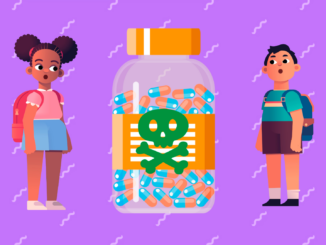
Safe disposal drug take-back bins help keep communities safe and clean
by Anne Stokes
Whether to cure disease, ease pain, or prevent illness, prescription medications keep people healthy. Unfortunately, along with the power to heal, medications also have the potential to cause harm when misused or improperly discarded. Safe disposal drug take-back bins provide a convenient way to keep unwanted medications out of the environment and out of the hands of those who would misuse them.
“The more good outlets that we have, like take-back bins, the better.”
Hans Kernkamp, General manager and chief engineer, Riverside County Department of Waste Resources
Don’t rush to flush
Even in the recent past, people were advised to flush unwanted medications down the drain or throw them away in the trash. But medications that end up in landfills or gets flushed down the toilet can pollute watersheds—the same watersheds that often supply communities’ drinking water.
“When you throw it in the trash, there’s a potential for contamination from this material,” says Hans Kernkamp, general manager and chief engineer of the Riverside County Department of Waste Resources. “Taking it to the landfill—even though it’s lined and hopefully does a good job of preventing groundwater contamination—nobody can say that it’s 100 percent foolproof, so there’s always that possibility.”
Not getting rid of unwanted medications has its risks
According to the Centers for Disease Control and Prevention, an average of 45 Americans died every day from prescription opioid overdoses in 2021, for a total of 280,000 deaths. And this was nearly five times the number of deaths in 1999. Similarly, two-thirds of teens who admit to abusing painkillers say they got them out of home medicine cabinets. And each year, approximately 59,000 children in the U.S. end up in emergency departments because of accidental poisoning.
“The risks of stockpiling are that somebody will get a hold of them that shouldn’t have access to those prescriptions,” says Kernkamp. “That’s a real issue, you hear about that all the time where people have taken others’ medication and misused it.”
A better option
Without the convenience and availability of drug take-back bins, disposal options are limited to flushing, throwing medications away in the trash, visiting a household hazardous waste facility, or stockpiling them at home until a community take-back event happens. These options can increase the risk of misuse or contribute to environmental pollution.
“We have a pretty robust [medication take-back] program in the county, but we’re a very large county—7,200 square miles—so when you have an event, it has to cover a pretty large area, so the chances are somebody is going to have to drive a good distance,” says Kernkamp. “The more good outlets that we have, like take-back bins, the better.”
To find a bin near you, go to medtakebackcalifornia.org.
Read more stories about med bins in California’s High Desert.
Brought to you by the California Drug Take-Back Program and the California Product Stewardship Council.
Recent facebook posts from California Product Stewardship Council

The California Product Stewardship Council (CPSC) is a powerful network of local governments, non-government organizations, businesses, and individuals supporting policies and projects where producers share in the responsibility for managing problem products at their end of life.
CPSC is California’s thought leader and expert on Product Stewardship and the Extended Producer Responsibility (EPR) movement.
EPR enjoys the support of more than 26 million Californians. That’s nearly 70% of the state's population! Nearly 150 resolutions have been passed by California local jurisdictions and organizations supporting a more sustainable and toxic free environment through product stewardship. CPSC works closely with companies who have redesigned products for reuse as well as those who have established pilot or permanent collection programs with some sharing of costs with others in the product chain.
California Product Stewardship Council


